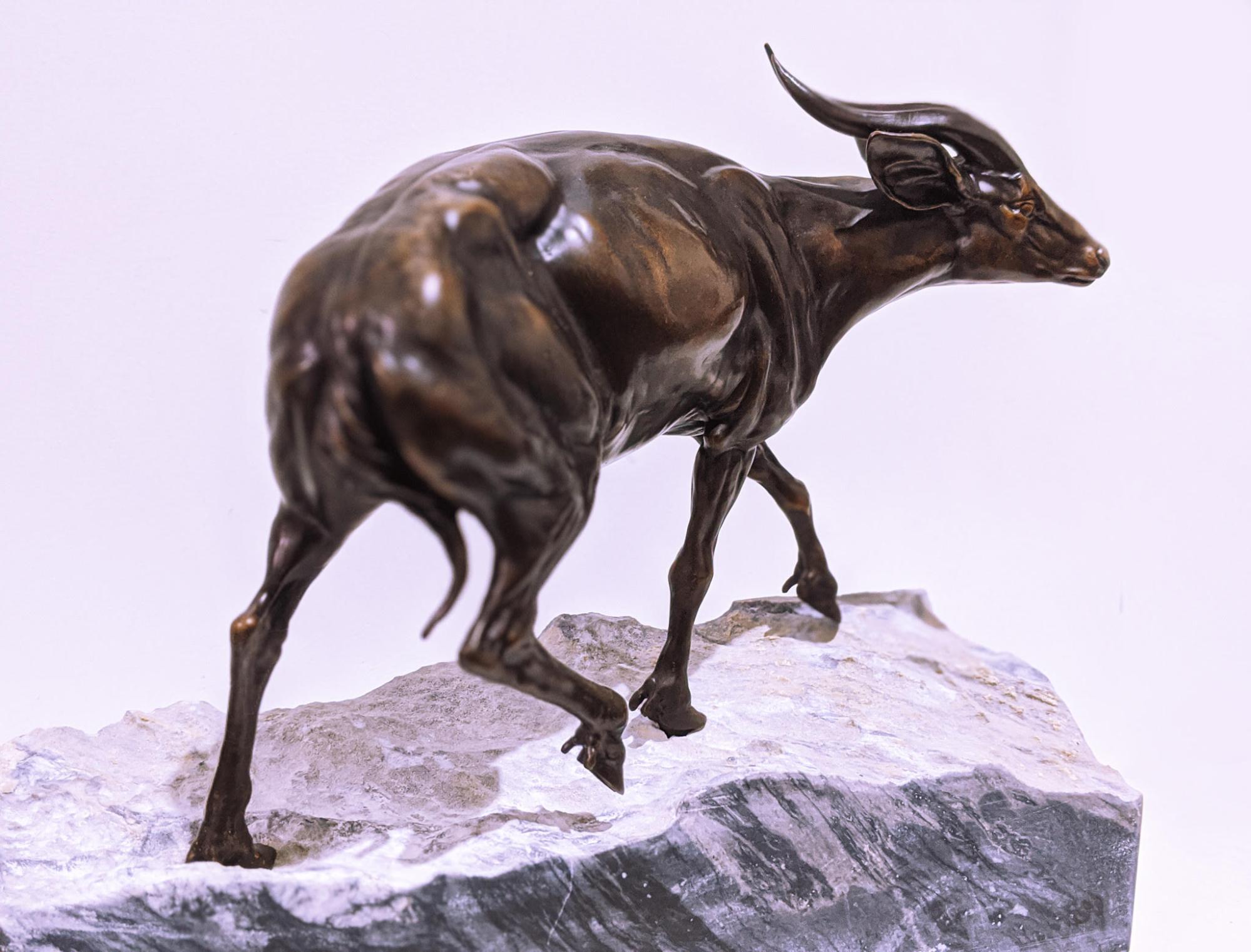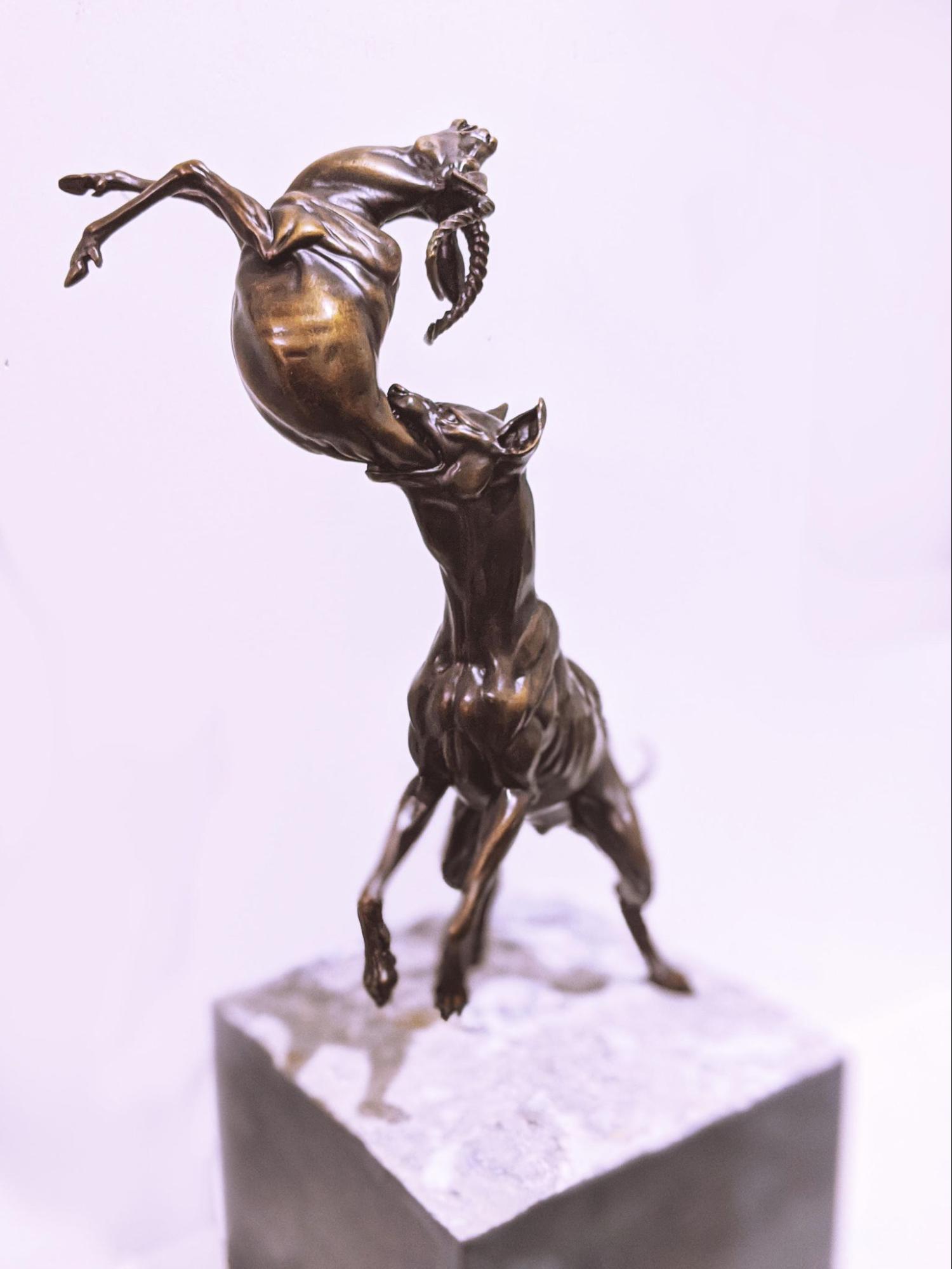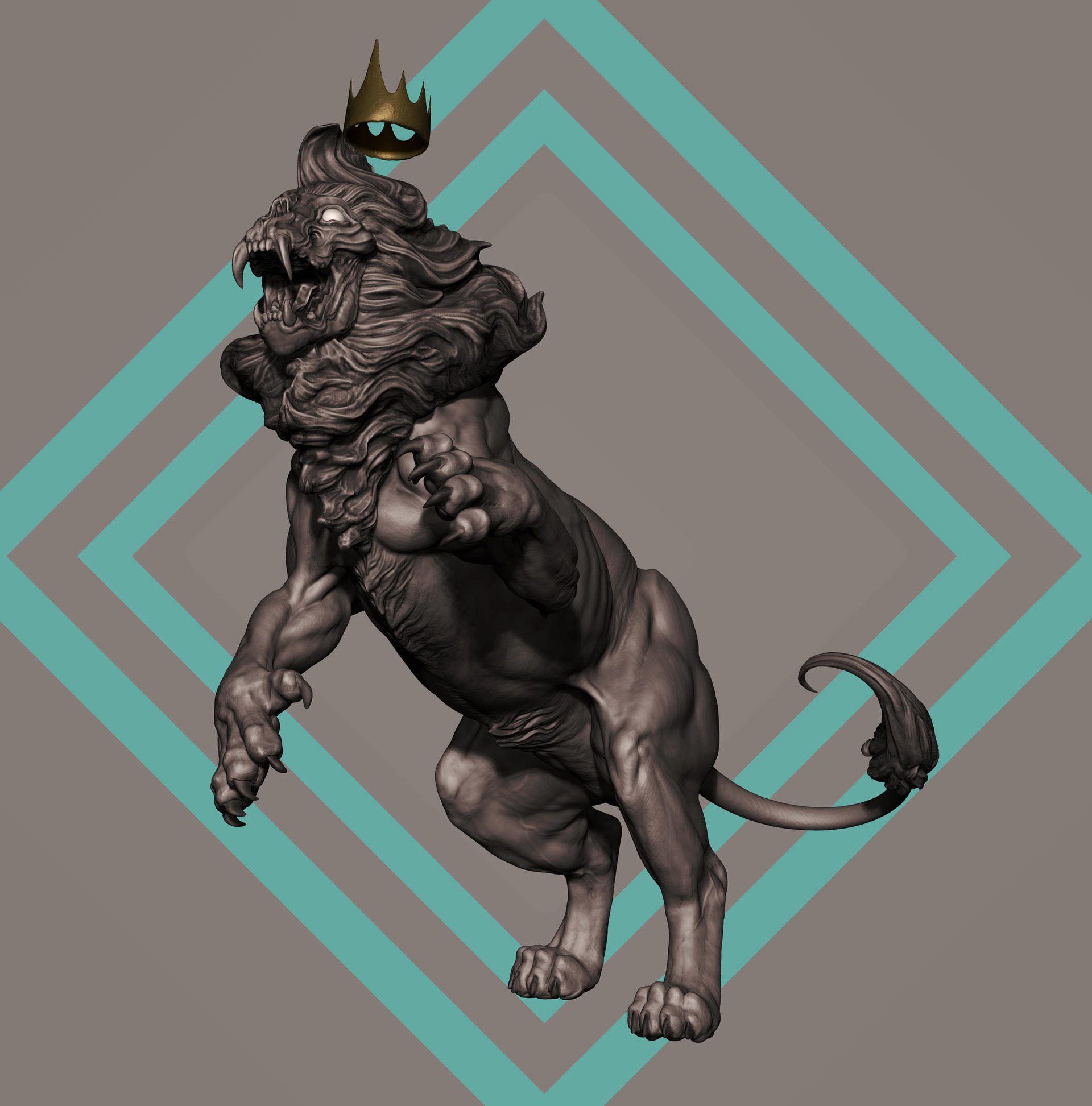Krystal Sae Eua is a highly talented sculptor and modeler. Over the years, she's worked her way up to the position of Senior Modeler at Weta Digital, where she contributes incredible work on franchises such as the Marvel Cinematic Universe (MCU) and the Fast & Furious (to name but a few). She's one of Gnomon Workshop’s great instructors and happens to be a Gnomon School alumna — it’s always fantastic when Gnomon graduates become instructors later in their careers and give back to the community. Be sure to check out her video tutorials on character modeling and animal sculpting after reading this interview.
Read on as we catch up with Krystal and discuss her work to date while also exploring how she's consciously invested time practicing in the often-challenging-but-always-fulfilling art of traditional sculpture. Learn how traditional processes have helped augment and improve the way Krystal digitally sculpts!
GW: Tell us about your career so far?
KSE: I initially wanted to be a 2D animator, but the industry wasn't looking for 2D animators at the time. I opted instead for 3D and studied at Gnomon School of VFX. After graduating, I was lucky enough to work for CafeFX, Hydraulx, and The Mill as a Modeler/Texture Artist and Lead.
Although I learned so much from my experiences at those studios, I realized my passion was for character and creature work. So, midway into my career, I committed to a ton of personal study and started making all the things I wished I was making at work — and the effort paid off, as shortly after, Blur hired me to do just that!
Blur was incredibly fun, and I was lucky enough to work on Netflix's Love Death & Robots and numerous cinematics for Tomb Raider, Destiny, and more.
Only one thing could tempt me away from such a great environment as Blur, however, and that's when I got a call from Weta Digital... I had been dreaming of working at Weta for over a decade, so when the call came for a position as Senior Modeler, I just had to give it a go!
Weta is a fantastic place, and the work and people are amazing. I'm incredibly fortunate to work at Weta today. I hope to continue refining my craft wherever my artistic journey takes me next.

GW: What Weta project have you most enjoyed contributing to?
KSE: One of my favorite recent memories was working on Shadow in the Cloud, a WWII horror directed by Roseanne Liang. I find smaller productions like this are often more memorable, as you get to have even more creative freedom and collaborate more closely with the people making the film. For example, when working on Shadow in the Cloud, I got to show Roseanne all of the nerdy references I used in my work!
GW: What are your main influences and inspirations in your work?
KSE: My main influences in the visual effects industry come from all of my friends and colleagues. Every day, my peers inspire me to accomplish greater things and produce better work. The visual effects community is so giving, and the real heroes are always passionate and willing to share how they do what they do.
Regarding my influences in sculpture, I find any type of sculptural work so appealing and inspiring, whether it's fine art or monster maquettes. Some of my favorite sculptors are Beth Cavener, Simon Lee, Nick Bibby, and Eudald De Juana Gorriz — just to name a few.
Lastly, and most importantly, my primary influence is nature — it never ceases to amaze me!
GW: What do you love most about sculpting and character work?
KSE: I love the act of sculpting and finding forms in chaos — the process is the most calming experience I can have. Many people want a quick solution in CG, but there's no substitute for patiently working through design and form in a model. Although it takes a lot of practice, it's so worth it to see the final result you carve out of the clay, digital or otherwise.

Digital sculpt of a greyhound in action.
GW: How did you get involved with traditional sculpture, and did the discipline transform how you think about digital sculpting?
KSE: A little while back, I realized I needed to buckle down and explore sculpture in all forms if I wanted to hone my digital sculpting craft. The tactility of traditional sculpture attracted me, but I found it could be brutal for a CG artist just starting to explore the art form — there's no symmetry or control-Z! However, I stuck with it and attended clay workshops with Simon Lee, Andrew Cawrse, and Beth Cavener. Before long, I came to love and respect the medium.

One of Krystal’s physical creature sculptures.
Studying traditional sculpture has made me a much more well-rounded artist and helped my eye when it comes to shape and form. Learning traditional sculpture made a significant difference at work, especially when I have to solve design problems — I can drill down to the basic shape that reads the most and then make the shape work.

One of Krystal’s physical sculptures of two creatures in battle.
GW: What tips do you have for other artists looking to get into character work in film?
KSE: If you want to be a character artist, you should be a HUGE nerd about it — there is so much you must learn, and to learn it, you must be passionate about it.
You need to know (and master!) software, for starters — and a lot of it. As a character artist, I often use many more programs than anyone else. In one day, I might use Maya, ZBrush, UV Layout, Photoshop, Marvelous Designer, Mari, Substance Painter, and Nuke.
You should also develop a strong knowledge of anatomy. When you're working in production, you might be working on a digital scan and just cleaning things up, which doesn't require substantial anatomical knowledge. However, you will face problems where you need to fix anatomy on the fly, sometimes from scratch. So spend time learning those basics. Even though it's a ton of work, the learning process can also be so much fun if you genuinely love what you do!

Digital Sculpture of a Lion King.
GW: Your Gnomon workshops 'Dynamic Animal Sculpting' and 'Character Modeling for Production' are hugely popular. What do you hope artists get from these tutorials?
KSE: My workshops cover workflows I use in both professional and personal projects. However, throughout each, my main aim is to provide artists a real sense of what colleagues will expect when working within a studio structure. Alongside technical skills, I impart information about problem-solving, working to deadlines, and how to perform actions as efficiently as possible.
I would say Character Modeling for Production focuses on more technical skills. Dynamic Animal Sculpting focuses more on the design side of things and concept sculpting.
As a character artist, I always promote the thinking that one must have a handle on both elements of sculpture. An artist must use both sides of their brain at all times if they are to follow a pipeline while also remaining clean, efficient, versatile, and creative. Watching both workshops will give artists insight into how I achieve this in my personal work.
GW: How have you improved your character creation workflow since delivering these workshops?
KSE: No matter what kind of artist they are, artists should never stop learning. Personally speaking, I am continually fine-tuning my process across everything I do. As the technology we use every day is in constant flux, and there are so many different ways you can approach your art, I am always trying to improve both my workflow and the quality of the art I produce.
The most significant jump for me is on the latter part of that process — the creative side. As I’ve been sculpting a lot, I'm now much faster than I used to be!
GW: What's currently exciting you about the industry, and why?
KSE: I'm currently exploring 3D printing and manufacturing techniques for collectibles and fine art. I find it so cool that we can use so many digital workflows for real-world applications. I've been looking into it a lot, and I have many projects in the works. Expect more details in the months to come!

You can order Krystal’s Maned Wolf through MoreauCollective.
To stay up to date with Krystal’s latest projects and artistic developments, follow her on Instagram at @iamsadpanda.




Related News
Beauty in the Beast: Neville Page on Burnout, Mindset & Creative Survival
May 07, 2025
Beauty, Beasts & Better Pipelines: Neville Page on Digital Design & Practical Makeup
May 07, 2025
Capturing Assets & Environments for Call of Duty: An Interview with Gui Rambelli
Feb 10, 2025